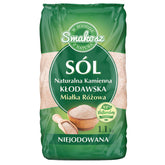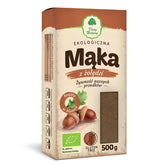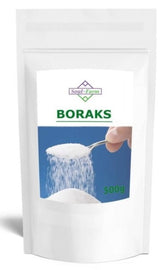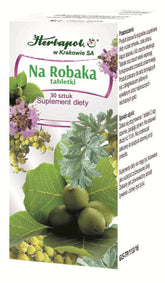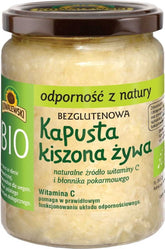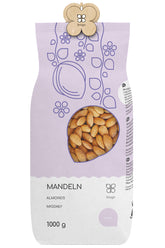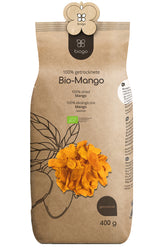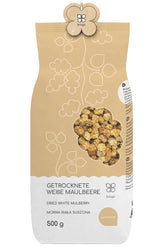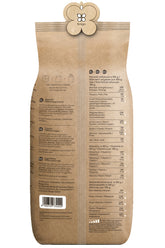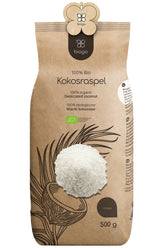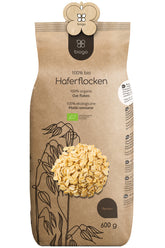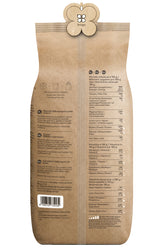What is Umami? The Secret of the "Fifth Taste"
Contents:
- Why is it worth knowing the umami flavor?
- Umami in nature – where can it be found?
- Using umami in the kitchen?
- Umami in a plant-based diet – The secret of plant-based flavors
- Is umami healthy?
When we think of tastes, four usually come to mind: sweet, salty, sour, and bitter. But there is another one that eluded classification for years – Umami, the taste of depth, fullness, and pleasant essence.
It was discovered in 1908 by the Japanese chemist Kikunae Ikeda, who noticed that kombu seaweed broth had a unique, "meaty" and satisfying flavor, even though it contained no meat. This flavor was due to glutamic acid, an amino acid that occurs naturally in many foods.
The Japanese word Umami means "delicious" or "tasty," and that's exactly the taste experience it describes. It is neither salty nor sour – rather, it creates a feeling of fullness and flavor, making dishes seem more satisfying, richer, and simply... better.
Why is it worth knowing the umami flavor?
Umami is not just a culinary curiosity – it's a true revolution in our taste perception.
Studies show that umami receptors on the tongue are located alongside other taste receptors and primarily respond to glutamate, inosinate and guanylate – natural compounds found in foods.
Umami flavor has several unique benefits:
- It enhances the natural flavor of foods , so you can use less salt and fat.
- It enhances the feeling of satiety , which contributes to a healthy diet.
- It unifies flavors – it can harmonize sour, salty, and sweet notes in a dish.
- It stimulates appetite and digestion , which is particularly important for people following a plant-based diet.
Umami in nature – where can it be found?
Contrary to what one might assume, the umami taste does not originate in the laboratory. It occurs naturally in many foods, especially in ripe, dried, or fermented ones. Through the ripening and fermentation processes, the content of free amino acids increases – and with it, the umami flavor.
Umami sources:
- Tomatoes and tomato products – the riper the tomato, the more intense the umami flavor. Sun-dried tomatoes are a true umami concentrate.
- Mushrooms (especially Shiitake and oyster mushrooms) – rich in guanylate, which enhances the effect of glutamate.
- Seaweed (Kombu, Wakame, Nori) – here began the history of umami. Perfect for broths, soups, and salads.
- Aged cheeses (Parmesan, Cheddar) – naturally rich in amino acids that develop during the ripening process.
- Fermented plant products – e.g., miso, tempeh, soy sauce, tamari.
- Root vegetables and tubers – e.g., carrots, celery, onions, potatoes, and algae used in Asian cuisine.
- Green tea and kombucha contain compounds that provide a delicate, deep flavor.
Using umami in the kitchen?
If you want to give your dishes more flavor and aroma, just a few simple changes are enough. Umami unfolds its full effect best in combination with various ingredients – for example, tomatoes with mushrooms or soy sauce with vegetables.
To highlight umami:
- Add miso paste to soup or sauce – a teaspoon is enough to completely change the dish's flavor.
- Roast vegetables instead of boiling them – caramelization at high temperatures brings out its natural umami flavor.
- Use soy sauce or tamari instead of part of the salt.
- umami-rich foods – e.g., sun-dried tomatoes + Parmesan or mushrooms + soy sauce.
- Prepare an umami broth – let carrots, onions, kombu, and shiitake mushrooms simmer for 30 minutes – it's the perfect base for any soup.
Umami in a plant-based diet – The secret of plant-based flavors
Many believe plant-based cuisine is less flavorful. That's a misconception!
Umami is the key to delicious vegan and vegetarian dishes, as it provides a meat-like flavor without any meat. That's why chefs specializing in plant-based cuisine use it so often:
- Miso paste
- Soy sauce or tamari,
- dried mushrooms,
- Tomatoes
- Seaweed and vegetable broth.
With these ingredients, you can prepare plant-based burgers, soups, and sauces that taste as if they came from a top restaurant – and are completely natural and healthy.
Is umami healthy?
Yes! The umami taste comes from natural amino acids in foods. Monosodium glutamate (MSG), often associated with umami, is also safe in its natural form – as long as it comes from natural sources and is consumed in moderation.
However, it is recommended to choose foods with a high content of natural glutamate, such as vegetables, seaweed, and fermented products, instead of artificial flavor enhancers.
Interestingly, dishes rich in umami reduce salt intake, which can have a positive effect on blood pressure and overall health. This is an ideal solution for anyone watching their heart health and following a low-sodium diet.
Umami and the enjoyment of food
Umami not only influences taste but also our emotions. Studies show that umami-rich foods activate the reward centers in the brain – similar to sweets, but without the negative effects of too much sugar.
Therefore, consuming umami-rich foods leads to a faster feeling of satiety.
Umami is the fifth taste and combines enjoyment, depth, and naturalness. You don't have to be a chef to enjoy it – all you need are a few ingredients you already have at home:
- dried tomatoes,
- Shiitake mushrooms,
- Soy sauce,
- Seaweed,
- Parmesan or its vegan alternative.
With these products, your dishes taste like they're from the best restaurant – completely without artificial additives, entirely natural.
THE PUBLISHER'S CHOICE
Almonds 1 kg BIOGO
- €11,69
€13,75- €11,69
- Unit price
- / per
Walnuts 800 g BIOGO
- €8,65
€10,18- €8,65
- Unit price
- / per
Dried organic mango 400 g BIOGO
- €10,99
- €10,99
- Unit price
- / per
Dried White Mulberries 500 g ORGANIC
- €5,84
€6,87- €5,84
- Unit price
- / per
Dried organic figs 800 g BIOGO
- €30,12
- €30,12
- Unit price
- / per
Unpeeled buckwheat groats 1 kg BIOGO
- €2,81
€3,31- €2,81
- Unit price
- / per
Organic coconut flakes 500 g BIOGO
- €10,07
- €10,07
- Unit price
- / per
Organic oat flakes 600 g BIOGO
- €3,77
- €3,77
- Unit price
- / per

